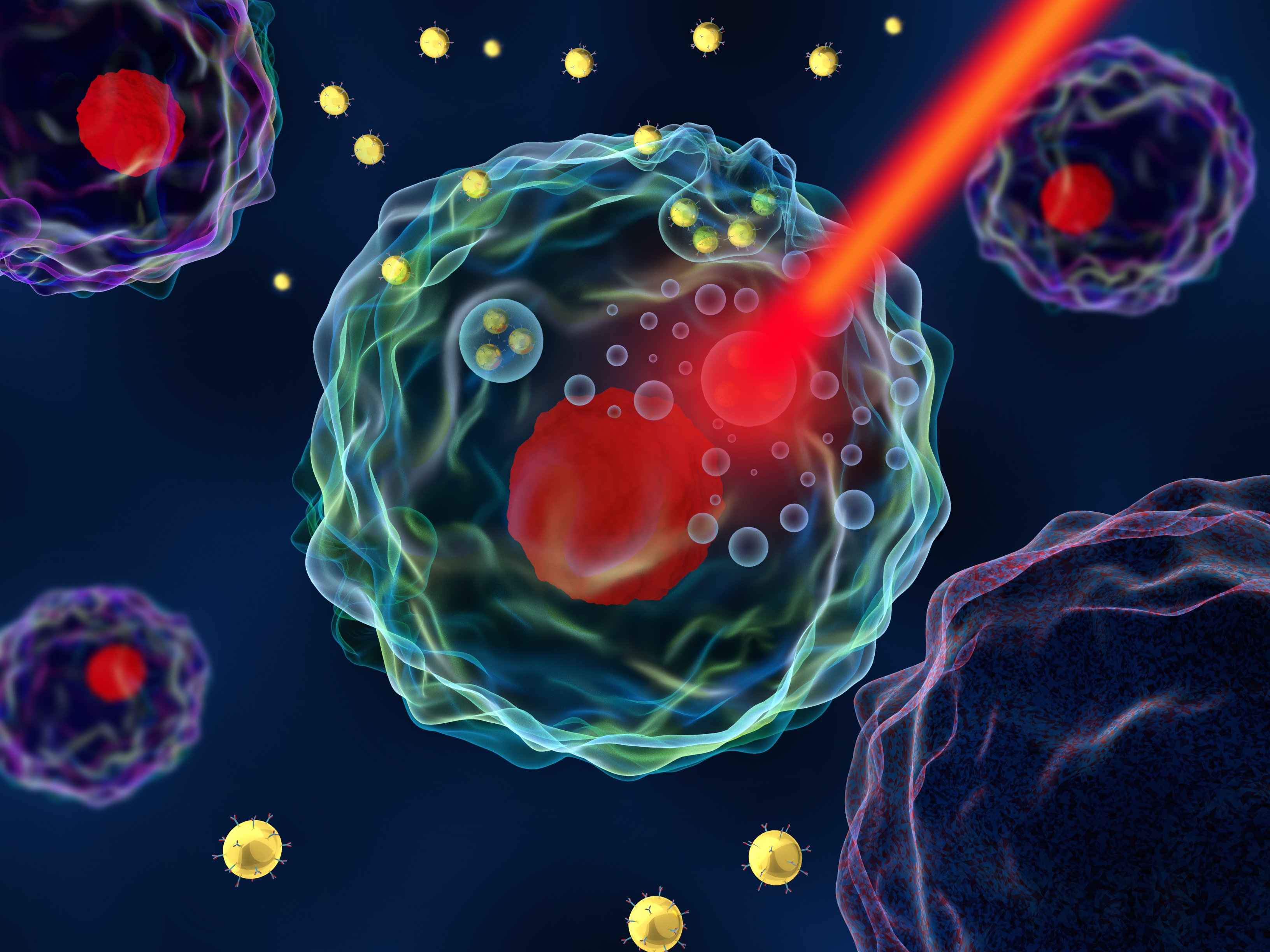Introduction
With the advent of nanomedicine in recent decades numerous nanomaterials have been used for the formulation and synthesis of nanoparticles. A nanoparticle is defined as a tiny particle with a size ranging 1-100 nm. Among the different types of nanomaterials, magnetic gold nanoparticles (GNPs) have attracted much attention in the last decades. The two physical and chemical fundamental properties of GNPs are affected by their nanostructure – shape and crystal texture – which allows them to have numerous biomedical applications in prophylaxis, diagnosis and treatment.
Magnetic gold nanoparticles have particular features: strong binding affinity to thiols, disulfides and amines, high X-ray absorption coefficient, ease of synthetic manipulation, enabling precise control over the particle's physicochemical properties, unique tunable optical and distinct electronic properties. They have the ability to interact with light via surface plasmon resonance (SPR) and building blocks for plasmonic devices and other optical devices, and also have multifunctional properties in therapeutics, detection, imaging, and surface alteration and are used for highly sensitive biomolecular screening, selective extermination of cancer cells by photo thermal therapy, specific cells, labeling of proteins and cellular therapeutic delivery.
Magnetic gold nanoparticles can be functionalized with antibodies, carbohydrates, and nucleic acids. This makes them very useful for scanning electron microscopy (SEM), transmission electron microscopy (TEM), and confocal light microscopy as well as pathogen detection and other diagnostic assays. The ability of gold to absorb light via surface plasmon resonance (SPR) makes them useful tools for photothermal therapy in the treatment of cancer. Some of their applications in modern science will be explained in detail.
Diagnostic Imaging
Diagnostic Imaging
MRI is a non-invasive bio-imaging technique which gives 3D anatomical details with high resolution. The principle of MRI is related to nuclear magnetic resonance (NMR). Modern MRI machines scan the whole body within a few minutes. The performance of MRI is heavily dependent on longitudinal relaxation time (T1) and transverse relaxation time (T2). The values of T1 and T2 depend upon the type of biological material under consideration. Gadolinium based contrast enhancement agents have been widely used to obtain MRI images. The hybrids of gold with gadolinium chelates have also been reported for improved MRI performance. Magnetic nano cores (e.g., iron, cobalt and nickel) coated with gold shells have been successfully used to enhance MRI contrast. Gold, when interacting with magnetic nanoparticles, causes magneto-plasmonic properties. These magneto-plasmonic structures have been utilized in MRI contrast enhancement as well as for optical bioimaging. MRI-photoacoustic-Raman has also been devised to have better sensitivity and to get more information in a single scan.
Photoacoustic Imaging
The GNPs with prisms, rods, and shell morphologies are suitable for the photoacoustic imaging and act as exogenous contrast agents. Likewise, nanocages have considerably improved the photoacoustic tomography (PAT) efficiency. PAT uses the physics principles of optical and acoustic (ultrasonic) waves to generate high contrast images. It is a rapidly growing field in bio-imaging and is readily used for clinical applications. Thermodynamics of bio-structures changes due to absorption of incident optical energy, which in turn changes the pressure (mechanical) and produces acoustic waves. The acoustic waves are detected by ultrasonic sensors and produce images. PAT has applications in blood flow monitoring, temperature monitoring, oncology, gastroenterology, neurology, cancer and many more.
PAT is based on photoacoustic effects providing 3D cross-sectional images of biological structures like tissue, organelle, cells, and organs (in vivo) to a considerable depth with micrometer level resolution. Different types of GNPs such as gold shells, prisms, rods, stars, and nanocages have been utilized in PAT as contrast enhancing agents owing to their robust chemistry.
Biosensing
Sensitive Detection: Point-of-Care Testing
Magnetic GNPs have major applications in colorimetric, chemical and biological analytical tests as an efficient sensor for detection and recognizing different analytes such as metal ions, anions and biomolecules such as saccharides, toxins, amino acids, peptides and proteins, nucleotides, nucleic acids, inorganic ions, and enzymes.
Immunoassay is another field in which GNPs have been utilized. The sol particle immunoassay relies on antibody-functionalized GNPs. When the functionalized particles are in the presence of a target molecule at the optimal concentrations many particles will bind to the target molecules at the same time. This multiple binding causes the particles to clump together around target molecules. The absorbance spectrum for individual gold nanoparticles is different from the absorbance spectrum for clumped GNPs. The aggregated nanoparticles shift red and have a broader absorbance. Therefore it is easy to detect the presence of a target molecule by observing that optical shift. This idea can also be used to detect nucleic acids by functionalizing the nanoparticles with single stranded DNA.
Targeted Drug delivery
GNPs have exceptional properties that make them an ideal drug delivery system: Precise delivery of nanocarriers to affected tissues, monitoring the rate and area of release of drugs, enhancing drug bioavailability on-site, improving drug solubility and stability, easy preparation, being bioinert, non-toxic, varying core diameters and size dispersion.
Combination Therapies
GNPs have been used as novel antibacterial agents and an alternative for the antimicrobial resistance developed by some bacteria such as Staphylococcus. GNPs chemically synthesized with Solanum nigrum leaf extracts demonstrated scavenging and antibacterial static actions. GNPs have antibacterial suppressor effects against Staphylococcus saprophyticus, Bacillus subtilis, Escherichia coli, Pseudomonas aeruginosa and Klebsiella pneumonia.
Conclusion
While GNPs offer a promising future for biomedical science and research sector, the process of clinical transformation from laboratory studies to clinical trials should overcome challenges of rationalizing the application of the physical and chemical properties of GNPs as most of the times the successful in-vitro studies fail to demonstrate the desired intended outcomes when employed in-vivo. This implies the importance of focusing more on the process of synthesis and neglected properties of GNPs.
Related news
- Molecularly imprinted polymers
- Properties of nano gold
- Pathogen detection using magnetic nanoparticles or molecularly imprinted polymers





